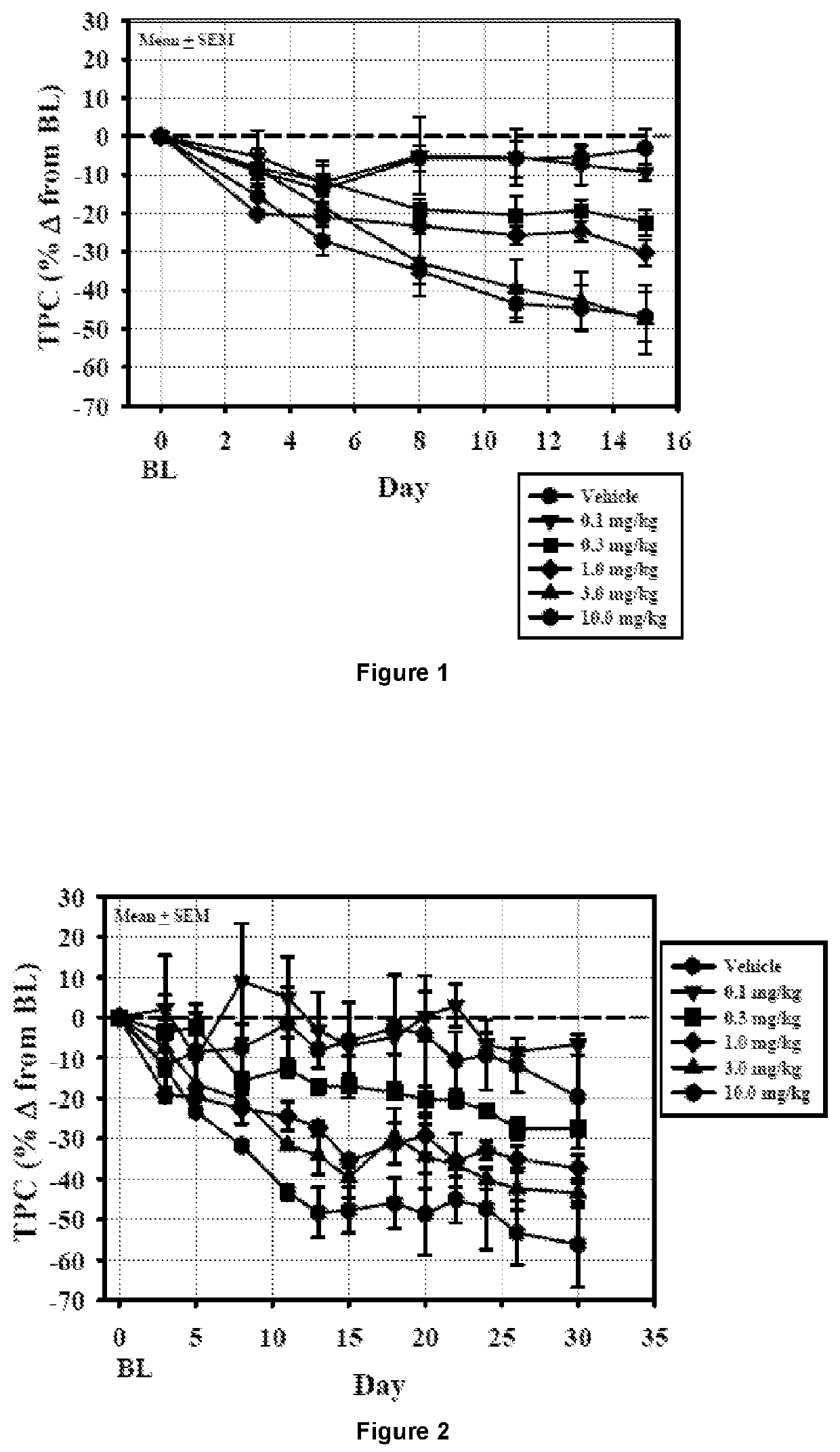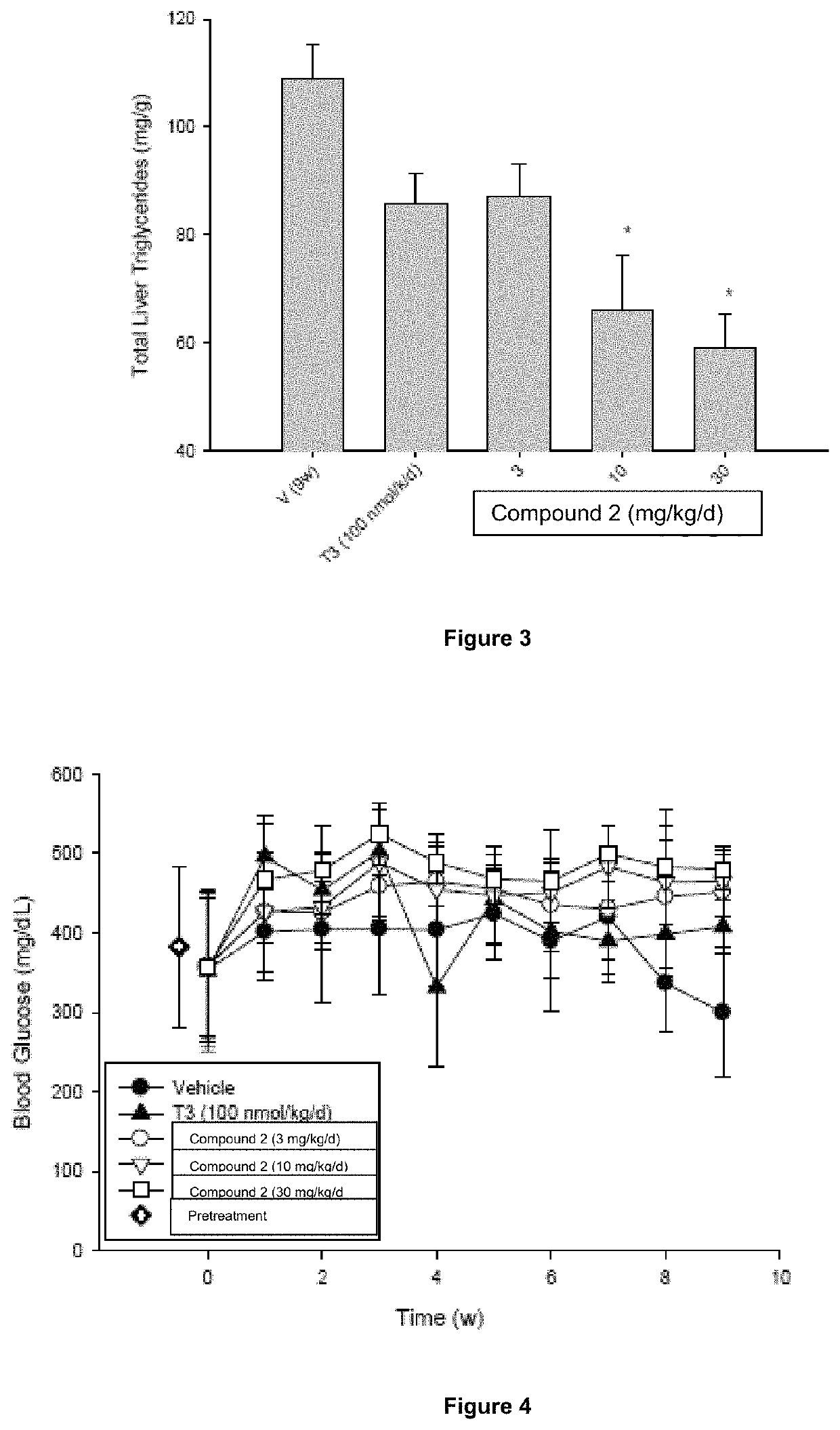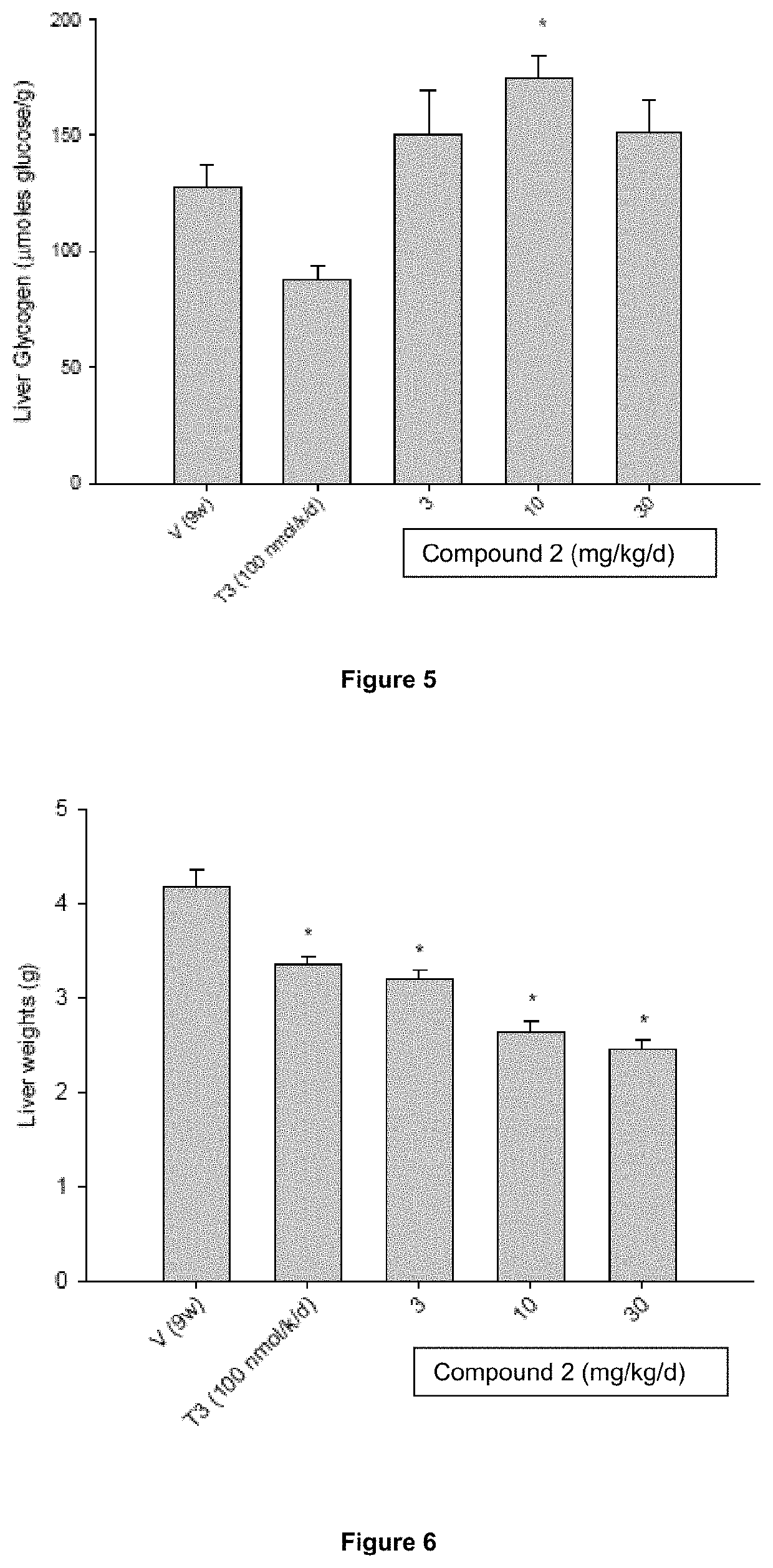Method of treating glycogen storage disease
a glycogen storage and disease technology, applied in the field of glycogen storage disease treatment, can solve the problems of concomitant defect in energy storage and energy metabolism throughout the body, deficiency in synthesis, transportation or utilization of glycogen, and buildup of glycogen in liver, heart, and/or skeletal muscle, so as to improve hepatic steatosis, hypercholesterolemia or hepatic inflammation, and reduce serum lipid, serum triglycerid
- Summary
- Abstract
- Description
- Claims
- Application Information
AI Technical Summary
Problems solved by technology
Method used
Image
Examples
example 1
[0187]Compound 2 Dosing Study in Dogs: The objective of the study was to determine the effects of oral administration of Compound 2 once-daily for 14 days followed by alternate day dosing for 14 days on plasma cholesterol levels and indicators of thyroid function in beagle dogs. Compound 2 was formulated with Lutrol F68 NF (Poloxomer 188) and carboxymethylcellulose (CMC; sodium salt / high viscosity) and was administered as a suspension in 0.5% CMC / 1% Lutrol in deionized water. Twelve beagle dogs (9-15 kg) were randomized into 6 dosing groups (1 male and 1 female / group) and gavaged once-daily with a 0.5% CMC / 1% Lutrol F68 suspension of Compound 2 at doses of 0.1, 0.3, 1, 3, or 10 mg / day or with vehicle for 14 days. At the end of the treatment cycle (Cycle 1), the dogs were washed out for 4 weeks and then entered into a second 14-day treatment cycle. Cycle 2 employed the same dosing paradigm as Cycle 1, but animals were randomized to Cycle 2 in such a way that the combined dosing group...
example 2
[0189]The objective of this study was to evaluate the efficacy and safety of Compound 2 treatment at doses of 3, 10, and 30 mg / kg / day for 9 weeks in male ob / ob mice. 3,3′,5-Triiodo-L-thyronine (T3) was used as a comparator in this study.
[0190]Methods: Seventy-eight adult male ob / ob mice were assigned to six different treatment groups (n=6-24 / group). Animals were dosed daily with either vehicle [1% carboxymethylcellulose (CMC) in water, PO], T3 [(100 nmole / kg / day in aqueous solution, subcutaneous (SC)], or Compound 2 [3, 10 or 30 mg / kg / day in 1% CMC, PO]. Blood glucose and plasma cholesterol were measured weekly in all animals. Subsets of animals in the vehicle-treated and 30 mg / kg / day Compound 2-treated groups were sacrificed after 3, 6 and 9 weeks of treatment to analyze the temporal effects of Compound 2 on liver weight and liver triglyceride levels. Liver triglyceride levels, liver glycogen content, heart, liver and epididymal fat pad weights, and plasma clinical chemistry parame...
example 3
[0194]Objectives: The objective of the study was to evaluate the efficacy and safety of Compound 2 treatment for 4 weeks in male Zucker Diabetic fatty (ZDF) rats. Total plasma cholesterol, blood glucose levels, liver and muscle glycogen levels, and a plasma clinical chemistry were evaluated. Additionally, histological and biochemical assessments of hepatic steatosis were performed post-mortem. MB07875, a known human thyroid hormone receptor ligand, was included as a comparator in these studies.
[0195]Methods: Eight-week old male ZDF rats (n=5 / group) were treated orally with Compound 2 or MB07875 for 28 days. The doses of Compound 2 [in 0.5% carboxymethylcellulose (CMC)] were 0.25, 0.5, 1, 2.5, 5, 15 and 50 mg / kg / day. The dose of MB07875 (in 0.5% CMC) was 0.2 mg / kg / day. Body weight was assessed just prior to treatment and at 24 hours following the last dose. Total plasma cholesterol and blood glucose were measured on a weekly basis. While still under anesthesia, blood was collected fr...
PUM
| Property | Measurement | Unit |
|---|---|---|
| time | aaaaa | aaaaa |
| weights | aaaaa | aaaaa |
| concentration | aaaaa | aaaaa |
Abstract
Description
Claims
Application Information
 Login to View More
Login to View More - R&D
- Intellectual Property
- Life Sciences
- Materials
- Tech Scout
- Unparalleled Data Quality
- Higher Quality Content
- 60% Fewer Hallucinations
Browse by: Latest US Patents, China's latest patents, Technical Efficacy Thesaurus, Application Domain, Technology Topic, Popular Technical Reports.
© 2025 PatSnap. All rights reserved.Legal|Privacy policy|Modern Slavery Act Transparency Statement|Sitemap|About US| Contact US: help@patsnap.com



